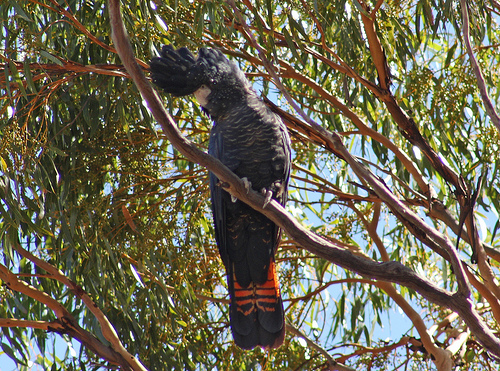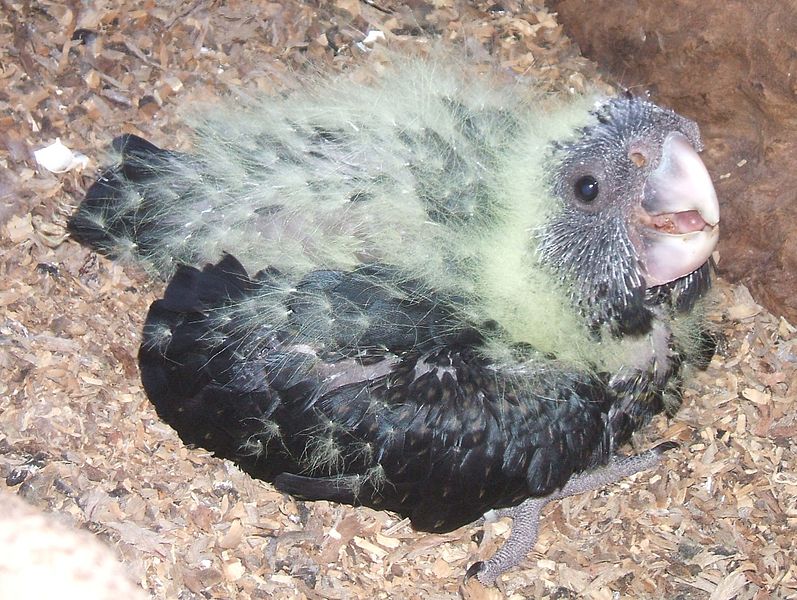Colours
Distinguishing features
They are sexually dimorphic. The male's plumage is all black with a prominent black crest made up of elongated feathers from the forehead and crown. The bill is dark grey. The tail is also black with two lateral bright red panels.
Females are black with yellow-orange stripes in the tail and chest, and yellow grading to red spots on the cheeks and wings. The bill is pale and horn-coloured. The underparts are barred with fine yellow over a black base.
In common with other cockatoos and parrots, Red-Tailed Black Cockatoos have zygodactyl feet, two toes facing forward and two backward, that allow them to grasp objects with one foot while standing on the other, for feeding and manipulation.
Juvenile Red-tailed Black Cockatoos resemble females until puberty, which occurs around four years of age, but have paler yellow barred underparts. As the birds reach maturity, males gradually replace their yellow tail feathers with red ones; the complete process takes around four years. (Wikipedia)
Size
- From 55 cm to 60 cm (Length of specimen)
Wingspan
- Up to 110 cm
Synonyms
Interesting facts
- They are almost exclusively left-footed (along with nearly all other cockatoos and most parrots). (Wikipedia)
Distribution
Distribution and habitat preferences
The species is usually found in eucalyptus woodlands, or along water courses. In the more northerly parts of the country, these cockatoos are commonly seen in large flocks. They are seed eaters and cavity nesters, and as such depend on trees with fairly large diameters, generally Eucalyptus. (Wikipedia)
Diet
Although they feed on a wide variety of native and introduced grains, the mainstay of their diet is Eucalyptus seeds. There is a specific relationship between the species and larger-fruited species of gums. These vary across Australia but include the Marri in Southwest Western Australia, Darwin woolybutt Eucalyptus miniata across the north of the country, Eucalyptus baxteri in Victoria and the bloodwood species Corymbia polycarpa and Corymbia intermedia in Queensland.
They bite off branchlets with clusters of seed capsules, then hold them with their feet while chewing and harvesting seeds before littering the ground with debris. Among other seeds and nuts consumed are those of Acacia, Allocasuarina, Banksia, Grevillea and Hakea.
They also eat berries, fruits and various insects. (Wikipedia)






